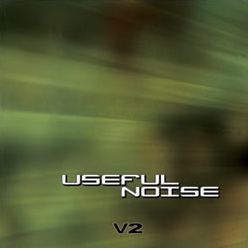Keith Hillebrandt: Maker of Useful Noise | ||
|
Audiohead | ||
 Logic and Peak for Sound Design Logic and Peak for Sound DesignToday, when Hillebrandt designs his crazy, droney, tweaky and atmospheric mood-touching sounds and soundscapes, he relies on a Power Mac running Logic and Peak. “Peak is my main program. It is always the front end and the back end of my sounds. “I always need a precision sample editor. A while back, when Alchemy wasn’t doing it for me anymore as a sample editor, I found that Peak did everything I needed it to do,” he says. “Plus, it’s also a program that continues to expand. “Peak also has given me some weird sound design processes,” says a grinning Hillebrandt. “I have this process called ‘Sound Design Roulette.’ I will go to the batch processor in Peak, and I’ll set up three or four things for Peak to batch process, I’ll have it convolve and then I’ll add gain by 10db, even if it sounds normalized. Then, I’ll just grab a folder of sounds — drums, glass breaking or something — drag it on there, then open each sound. Every once in a while, I’ll have a winner!” Why a Sound CD? The “Useful Noise” CD, distributed through Hillebrandt’s website, includes a collection of more than 1,000 sounds that Hillebrandt designed, plus a special access code that allows the person purchasing the CD to get access to Hillebrandt’s sound portal where he puts up new sounds weekly.
New Projects “I have this process called ‘Sound Design Roulette,’ explains Hillebrandt. “I’ll batch process drums, glass breaking or something, then open each sound.” Hillebrandt also plans to help out on Dillon’s coming solo album, which will chronicle the evolution of a certain recurring dream he’s had for years. Plus, Hillebrandt will soon jetset out to Brazil to remix a couple of artists there, including Brasil Nove. Hillebrandt is also considering lending his sound design expertise in designing sounds for his favorite software companies. He’s also up for designing sounds for film companies, or other bulk sound design projects. “If someone hears my library and says, ‘Oh we like this kind of sound.’ I’d like to say, ‘Well, okay, here are 1,500.’” “Music will always be my first love, though, so I couldn’t get too far away from that,” he insists. “If I were working on sounds for movies all day, I’d still go home and do music on my own at night.” Previous Page: Father of the Drone |
|
|
|